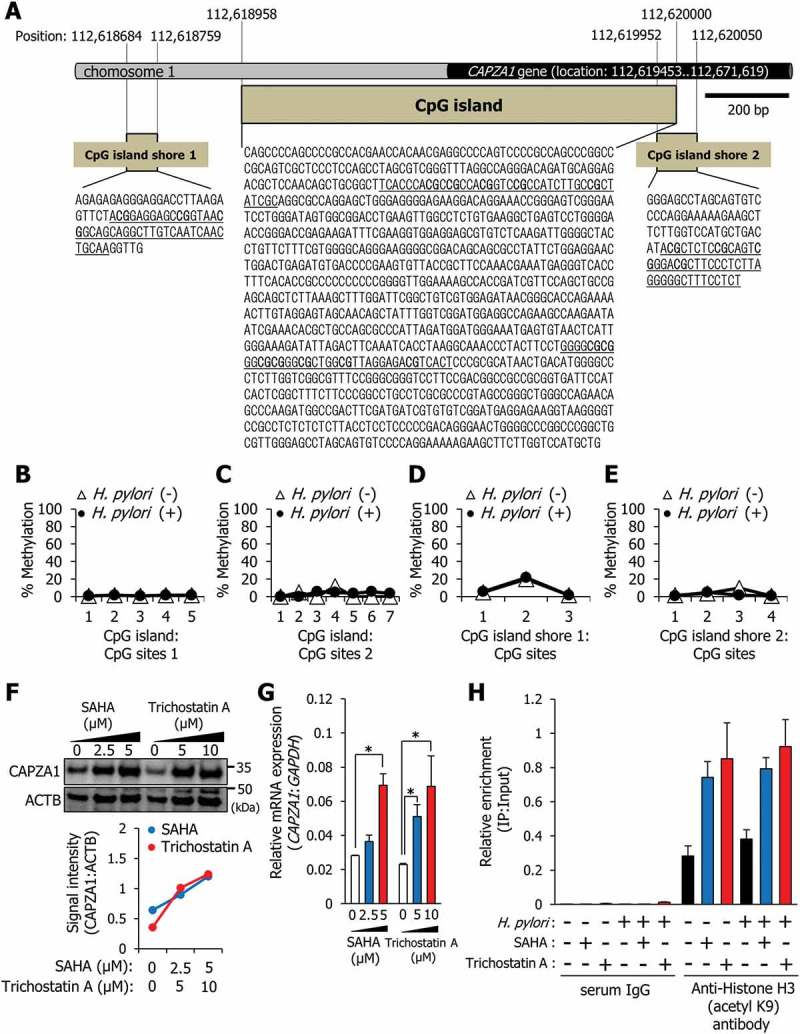Figure 8.

The CAPZA1 gene is regulated not by methylation of a CpG island, but by acetylation of histone. (a) Identification of a CpG island and CpG island shores around the CAPZA1 gene. Schematic map of the CpG island showing locations of 12 CpG sites, CpG island shore 1, and CpG island shore 2 with the indicated locations of CpG sites 3 and 4. (b, c, d, and e) AGS cells were infected with H. pylori for 5 h (MOI 50) and incubated in a medium containing antibiotic for 24 h. DNA methylation levels of 12 CpG sites of the CpG island (b and c) and of 7 CpG sites of CpG island shores (d and e) were analyzed by bisulfite genomic sequencing. (f) AGS cells were incubated with SAHA or trichostatin A for 24 h, and the levels of CAPZA1 expression were examined. (g) AGS cells were incubated with SAHA or trichostatin A for 24 h, and CAPZA1 mRNA expressions were quantified by real-time quantitative RT-PCR. Data are presented as the mean ± SD of 3 independent assays. *P < 0.05. (h) AGS cells were infected with H. pylori for 5 h (MOI 50) and incubated in a medium containing antibiotic and 5 μM SAHA or 5 μM trichostatin A for 24 h. Then, a ChIP assay was performed on these cells with an anti-histone H3 (acetyl K9) antibody or IgG from rabbit serum. Real-time PCR demonstrated the relative enrichment of CAPZA1 promoter genes in the DNA fragments pulled down by an anti-histone H3 (acetyl K9) antibody.
